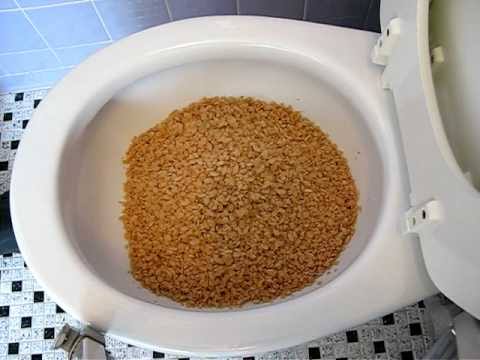Are you trying to find facts on Think Twice Before Flushing Food Down Your Toilet?

Intro
Lots of people are frequently faced with the problem of what to do with food waste, particularly when it involves leftovers or scraps. One usual inquiry that arises is whether it's all right to flush food down the bathroom. In this post, we'll delve into the reasons that people could take into consideration flushing food, the consequences of doing so, and different methods for correct disposal.
Reasons individuals could take into consideration flushing food
Lack of recognition
Some individuals might not know the possible harm brought on by purging food down the commode. They might incorrectly believe that it's a harmless method.
Comfort
Purging food down the bathroom may look like a quick and very easy solution to taking care of undesirable scraps, particularly when there's no close-by trash bin readily available.
Negligence
Sometimes, individuals may just choose to flush food out of sheer idleness, without taking into consideration the consequences of their activities.
Repercussions of flushing food down the commode
Environmental impact
Food waste that ends up in rivers can add to contamination and harm water ecosystems. Additionally, the water used to purge food can stress water sources.
Plumbing issues
Flushing food can result in clogged pipelines and drains pipes, triggering pricey pipes repairs and hassles.
Kinds of food that must not be flushed
Fibrous foods
Foods with coarse structures such as celery or corn husks can obtain entangled in pipelines and cause obstructions.
Starchy foods
Starchy foods like pasta and rice can take in water and swell, causing blockages in pipes.
Oils and fats
Greasy foods like bacon or food preparation oils need to never be flushed down the bathroom as they can strengthen and cause obstructions.
Correct disposal techniques for food waste
Making use of a garbage disposal
For homes furnished with garbage disposals, food scraps can be ground up and flushed via the plumbing system. Nevertheless, not all foods are suitable for disposal in this manner.
Recycling
Certain food product packaging products can be reused, decreasing waste and lessening ecological effect.
Composting
Composting is an environment-friendly way to get rid of food waste. Organic materials can be composted and used to improve soil for horticulture.
The relevance of proper waste monitoring
Lowering environmental damage
Proper waste administration practices, such as composting and recycling, assistance minimize contamination and maintain natural deposits for future generations.
Securing pipes systems
By staying clear of the technique of flushing food down the commode, house owners can prevent pricey pipes repairs and maintain the honesty of their pipes systems.
Verdict
Finally, while it may be appealing to flush food down the commode for benefit, it's important to recognize the possible repercussions of this activity. By embracing correct waste management techniques and getting rid of food waste sensibly, people can add to much healthier pipes systems and a cleaner setting for all.
FLUSH FOOD DOWN THE TOILET?
FLUSHING FOOD CAN CAUSE BLOCKED DRAINS IN YOUR HOME
All of the plumbing fixtures in your home are connected to the same sewer pipe outside of your home. This outdoor sewer pipe is responsible for transporting all the wastewater from your home to the Council sewer mains. Even small pieces of food that go down the kitchen sink can cause problems for your sewer. It should therefore be obvious that flushing larger bits of food, such as meat, risks a clog in either the toilet itself or the sewer pipes. Flushing greasy food is even more problematic because oil coagulates when it cools, coating the interior lining of your pipes.
THE TOILET IS NOT A BIN
Food isn’t the only thing that people shouldn’t be flushing down the toilet. People use the toilet to dispose of all kinds of things such as tampons, makeup wipes, dental floss, kitty litter and even underwear. Water goes to great lengths to educate residents about the high costs and stress placed on wastewater treatment systems simply from people flushing the wrong stuff down the toilet. It costs taxpayers millions of dollars each year, and homeowners thousands in blocked drain repairs.
FLUSHING FOOD IS A WASTE OF WATER
Flushing food is a waste of our most precious resource - water. In June this year Level 1 water restrictions were introduced to protect water supply from drought conditions. Much of New South Wales continues to be affected by prolonged drought with recent figures revealing up to 97 per cent of the state remains in drought. Depending on whether you have a single or dual flush toilet, every single flush uses between five and 11 litres of water. In the current climate this is a huge amount of water to be wasting on flushing food that should be placed in the bin (or better yet, the compost).
https://www.jabplumbingsolutions.com.au/blog/can-you-flush-food-down-the-toilet

Hopefully you liked our post on Flushing Food Down the Toilet?. Thanks a lot for taking time to read our article. Appreciated our content? Please share it. Let others locate it. Thanks so much for taking the time to read it.
See Availability